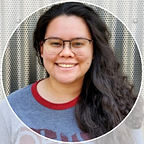Ohio State and CCAD Define the Future of CASE Mobility — Part 2
The Business Case for Senior Mobility
If you have not checked out Part 1, click here to see the overview of this project.
Historically automakers focus on the up and coming generations to target for new model development. A young, youthful, fresh look at mobility typically starts with the younger generations. However, a student team in the Ohio State Center for Innovation Strategies OnRamp program saw the same youthful spirit and a great deal more opportunity in a very different demographic — Baby Boomers. According to the US Census Bureau in 2019, the number of Boomers (ages 55–73) rivaled the number of Millennials (age 23–38); 71.6M to 72.1M respectively. Where these two generations differ is in household income. The wealth gap between Boomers and Millennials is staggering, as shown in the figure below. Boomers currently hold 56% of the nation’s wealth while Millennials straddled with education debt and the rising cost of living hold a mere 3%.
As we age, certain cognitive functions and motor reflexes begin to decline. While younger Boomers may not currently face mobility challenges, solving the future needs of this generation is just as important as addressing Millennial needs. Despite their accumulated wealth, medical expenses and day-to-day care chip away at financial gains earned over the course of their lives. Investing in a new vehicle as a long-term investment is not typically in the cards for this aging demographic. However, their needs for transportation are unchanged — and may be more important than ever before. The OnRamp student team — Eric Koepsel, Dana Murray, and Sam Frohman — found that seniors are unable to socialize or leave their homes due to limited mobility and financial resources. This in turn negatively affects their health and their happiness.
According to the student team’s research: “We researched the larger issue of isolation and its effects on health and happiness. Loneliness increases mortality by 26%, lonely individuals have a 64% higher chance of getting dementia, and extremely isolated people cost $130/month more in Medicare than those who are not. To tackle this problem, we thought the best solution would be to increase socialization within the older adult population”.
The team interviewed 93 older adults to determine if their hypothesis was on target. The quotes that were the most powerful were the same ones that were shared by many of the older adults interviewed:
“I only use Uber as a necessity.”
“I don’t like to bother my family to drive me around.”
“We know who the driver is…you don’t have to worry about what if I get a Lyft/Uber, who’s gonna show up…all those uncertainties are removed.”
Through their research the team discovered key insights that lead to their final proposal. They discovered that trust and maintaining independence are the key elements in their desired transportation experience.
The team also discovered that seniors are very comfortable with technology such as smartphones, apps, and computers and their capacity to learn new tech skills is only limited by motivation.
Current transportation options are currently failing to meet the total needs for this demographic. Living community transportation is a mechanical means to an end, lacking key physical comforts and desired level of personalization. While public transportation creates barriers through its complexity and fails to deliver door-to-door service.
To solve these issues, the student team proposed a concept. “Our solution is a neighborhood rideshare service that provides transportation by pairing 2 drivers to 60 customers in a localized geographic region. Our drivers will be medically trained and full time salaried employees.”
In addition to a whole host of convenience features, the team structured the service around a monthly subscription at multiple levels of entry based on price sensitivity and transportation needs. Prior to COVID-19, they created a testable model complete with a wireframe app designed for seamless user interaction and test-drove their concept with a few members of their target demographic. Testing with such users will help predict the future needs of Boomers as they continue to age.
Confident in their research and business proposal, the team faced one final challenge — the vehicle itself. Current mobility options fall short of meeting the needs of the driver and the passengers in this space. To address this concern, 99P Labs partnered with Columbus College of Art and Design, bringing together a group of aspiring Industrial Design students to dig deep into the functional needs of both Boomers and Millennials.
Stay with us for Part 3 as we follow the CCAD team on their design journey. You can also visit our website for more information on student innovation at 99P Labs.
